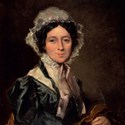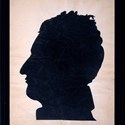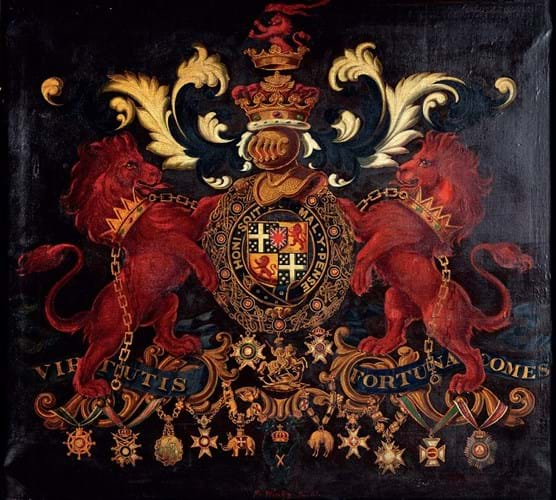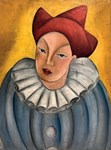Manthorpe House, a fine but small 18th century cottage situated at a not-so-idyllic busy road junction in the outskirts of Grantham in Lincolnshire, was one such assemblage where this tried and tested auction style worked a treat.
Owner Harold Ward started buying in the 1950s, cramming his home over the years with thousands of mostly 18th and some 19th century antiques – from Georgian furniture and silhouette portraits to copper and brass kitchenalia, lighting, boxes and other ‘odds and ends’.
Condition carried little importance. He bought what interested him, regardless of its state of preservation.
“Any minimalist going into that house would have needed medical attention – it was chock-a-block with stuff,” said Nigel Kirk of Mellors & Kirk (20% buyer’s premium) in Nottingham, tasked with the job of selling its contents on February 6-7.
As well as a general fascination for Georgian antiques, Ward bought items connected with the famous 19th century poet, Lord Byron.
Without large sums at his disposal, Ward spent modestly on his purchases. “He couldn’t afford a Byron first edition at £20,000, but anything to do with Byron or his relatives, however far remote, would be of interest,” said Kirk.
Although old-fashioned in taste, this long-standing collection’s quirky and somewhat chaotic nature appealed to today’s market with many pieces selling above what they might have made in a general sale.
Kirk added: “The frenzied bidding for pictures catalogued ‘in the style of’ or ‘after’ were the biggest surprise to me – it was the magic of a good single-owner sale peppered with decent things and helped along by the miracle of online bidding, which meant everything got spotted.”
Here-to-sell estimates
Offered with there-to-be-sold estimates that rarely went above £500, the 850-lot sale on February 6 totalled around £500,000, with a percentage sell-through rate in the high 90s.
One of the more valuable and well-preserved pieces was a rare portrait of an English naval captain by the Chinese artist known by his anglicised name Spoilum (fl. 1785-1805) (pictured in News, ATG No 2379).
Spoilum’s speciality was portraits of Chinese and western merchants and sea captains. Active between 1785-1810 in Guangzhou, the port city north-west of Hong Kong, he is credited with being the first painter in China to adopt western techniques, painting with oils on canvas rather than ink on paper or silk in the traditional Chinese style.
This achievement has brought him a certain amount of renown in Asia and it was from here that interest came for the work offered by Mellors & Kirk. In the end however, it was secured in the room by a member of the English trade for £38,000, well over its £1500-2000 guide, against an underbidder on thesaleroom.com.
Affectionate friends
Top-seller among the pictures connected to Byron was an early 19th century portrait of his friend and confidant Elizabeth Pigot.
The young pair had met when Byron was 16 in Southwell, the small town where his mother lived, and which Byron described as “full of parsons”. They became affectionate friends, exchanging letters and books while he was away at Cambridge.
Pigot also ensured the appearance of Byron’s first published work, Fugitive Pieces, printed locally in Newark in 1806.
The 2ft 5in x 2ft (74 x 61cm) oil on canvas, showing the sitter in a dark blue dress and lace cap with ribbons, had remained in the possession of the Pigot family until it was acquired privately by Ward. The picture had been illustrated (but not offered) in an auction catalogue of the family’s books and papers sold by Sotheby’s in 1993.
The portrait drew bids from Greece where Byron is a cultural hero – he took part in Greece’s War of Independence and died at Missolonghi – but it was eventually knocked down to a local private Byron enthusiast in Nottingham for £9000, nearly four times the upper guide.
An undated portrait of Byron after the original by Thomas Phillips (1770-1845), who painted many of the renowned figures of the day including two of the handsome poet that he exhibited at the Royal Academy in 1814, was also offered.
The 9¾ x 8in (24 x 20cm) oil on board in a Victorian gilt frame was knocked down at £3800 against a £150-200 guide.
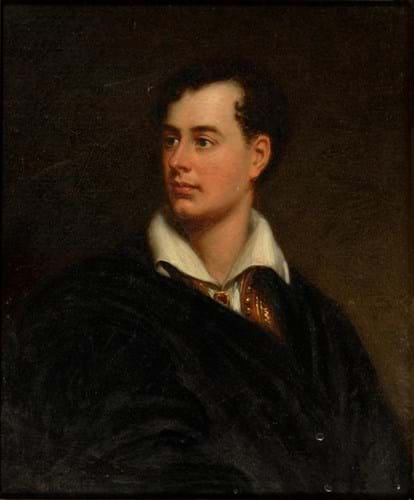
An undated 9¾ x 8in (24 x 20cm) oil on board portrait of Byron after the original by Thomas Phillips (1770-1845).
An early 19th century cut-paper silhouette of the poet’s profile sold for £1600 against a £200-400 estimate. This image has traditionally been attributed to John Leacroft (1743- 1819), who captured the poet’s likeness ad vivum in Southwell c.1806.
Another profile of the head of the 18-year-old Byron, also considered to have been taken by John Leacroft, had sold for $7000 as part of the vast Paula Peyraud Collection at Bloomsbury Auctions in New York in May 2009.
Jane Austen connection
One of Ward’s more recent acquisitions – “bought for a song” at Newark antiques fair around 20 years ago – was a set of unrecognised silhouette portraits relating to author Jane Austen.
Ward discovered that the set of seven early 19th century works depicted Austen’s nephew William Knight and his six children.
Held in high regard by Austen, Knight was rector for 50 years in the church where she worshipped and where her father had been rector. Ward showed them to the Jane Austen’s House Museum in Chawton, Hampshire, and allowed the museum to make a set of copies. The group took £1500 on thesaleroom.com against an £800- 1200 guide.
Call to arms
Another highlight was a 19th century armorial achievement or hatchment bearing the arms and honours of the Duke of Wellington.
It drew interest from decorative antiques dealers and was knocked down to an unknown buyer for £3000 against a £1000-1500 estimate. The 3ft 6in x 4ft (1.07 x 1.21m) oil and gold on hessian canvas bore the amusing pseudonymous signature Forty Winks of Taunton.
Elsewhere, a 17th century vellum or parchment portrait miniature of an unknown male sitter in armour and a lawn collar catalogued as ‘circle of Samuel Cooper’ was knocked down to a phone buyer at £3500 against a modest estimate of just £150-200. Kirk said the painting bore a likeness to the Duke of Northumberland.




